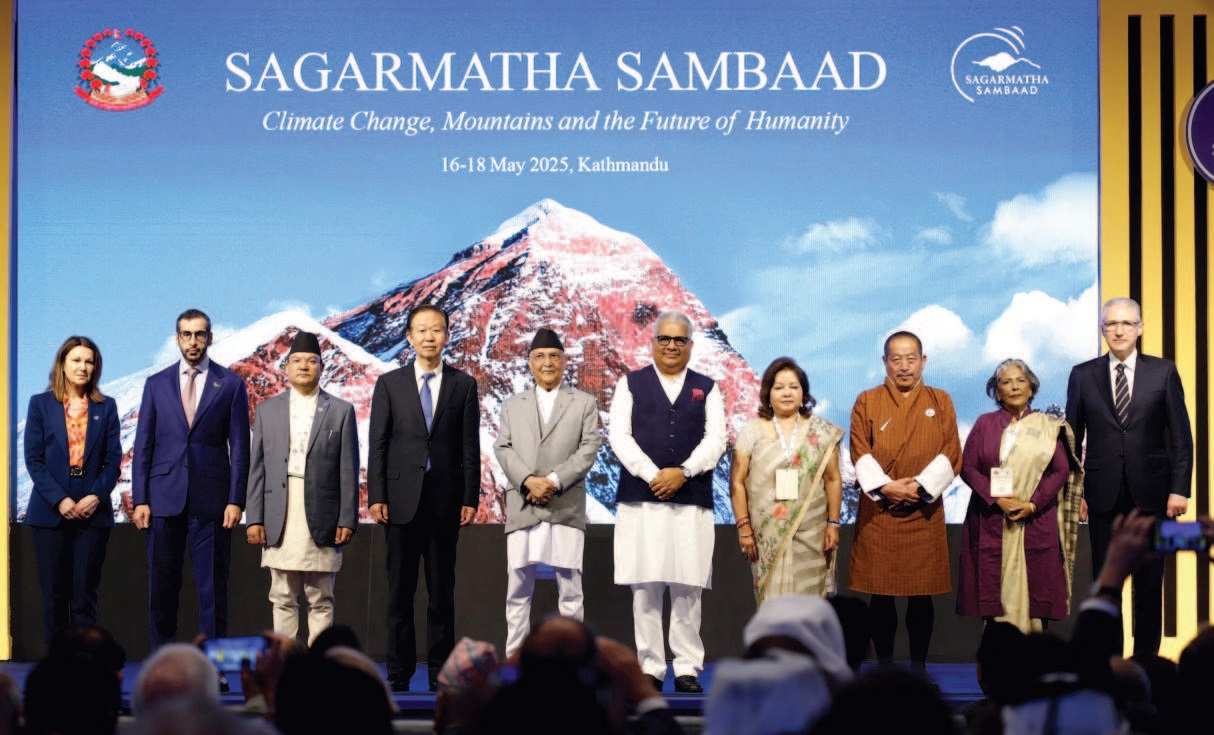
Effects of Climate Change Intensifying in Nepal
As climate change affects the world, countries like Nepal in the Himalayan region are experiencing more severe impacts. The rise in atmospheric temperature has brought several negative consequences for Nepal.
The disappearance of snow from the Himalayas, irregular rainfall, floods and landslides, extreme heat causing excessive rain, droughts, and dry spells have increased. Nepal contributes only 0.027 percent of global carbon emissions. Yet, it remains at the forefront of those suffering its consequences. The effects caused by large-scale natural disasters every year have been significant.
According to scientists, melting winter snow, lack of rain during rice planting, rainfall during harvest, snow-covered peaks turning into black rocks, and glacial lake outbursts are direct results of climate change.
-
Nepal contributes only 0.027% to global carbon emissions.
-
Nepal requires USD 46 billion to transition to a green economy (source: Economist Nar Bahadur Thapa).
-
Nepal follows the National Climate Change Policy, 2076 (2019 AD) for managing climate issues.
-
The Paris Agreement aims to limit global temperature rise to 1.5°C above pre-industrial levels.
Nepal Pays the Price for Others’ Emissions
Nepal faces the consequences of high carbon emissions produced by industrial and developed countries. Despite having minimal carbon emissions, Nepal is facing the worst impacts. To draw global attention to this reality, the government has organized the Sagarmatha Sambaad under the theme “Climate Change, Himalayas, and the Future of Humanity.”
Minister for Forests and Environment Ain Bahadur Shahi Thakuri said an international conference was held in Kathmandu to inform the global community about the impact of climate change on the Himalayan region and the problems Nepal is facing.
He said, “Our efforts alone cannot reduce the adverse effects of climate change. There is a need for global and regional partnerships. That has been emphasized in this forum.”
Focused on Partnerships and Green Economy
On the second day of the Sagarmatha Sambaad, discussions were held separately on “Global and Regional Partnership” and “Green Economy.” Experts suggested the need for meaningful global partnerships to reduce the impacts of climate change and promote green economies.
According to economist Nar Bahadur Thapa, Nepal needs 46 billion US dollars to build a green economy. “Nepal cannot achieve a green economy with its own resources; we must mobilize international aid,” he said. “Nepal must present itself strategically at the Sagarmatha Sambaad.” He also suggested implementing the 2015 Paris Agreement should be a key issue.
Paris Agreement Objectives
The Paris Agreement aims to reduce climate risks and impacts significantly. It seeks to limit global temperature rise to less than 1.5°C, prevent declines in food production, enhance adaptation capacity, and promote low greenhouse gas emissions and climate-compatible development. The agreement also encourages investment flows aligned with low emissions and climate-resilient development pathways.
Nepal is a signatory to the United Nations Framework Convention on Climate Change. The National Climate Change Policy 2076 aims to manage climate change according to national priorities and local needs while fulfilling international obligations, by utilizing financial, technical, and other global support and opportunities.
However, experts say Nepal has failed to benefit from such international and regional partnerships.
Weak Regional Collaboration with Neighbors
Associate Professor Sudip Thakuri of Tribhuvan University’s Central Department of Environmental Science said Nepal has not developed strong partnerships with its fast-growing neighbors, India and China.
He said, “Changes in one region are affecting neighboring areas. However, no significant collaboration exists between countries in this region, including India and China. There is no sharing of climate-related data. Scientific data is necessary. It must be increased. And collective efforts are needed to minimize the damage caused by these changes.”
He added that Nepal has been unable to present its suffering from climate change effectively on international platforms.
Nepal’s Weak Lobbying on Climate Issues
Thakuri noted that Nepal has been unable to lobby strongly in front of the international community. Despite representation in the UN and regional platforms, Nepal’s voice is unclear and not vocal enough, hindering global consensus.
“Regional-level partnerships are extremely weak. Internationally, project-oriented NGOs are active. But government-to-government partnerships are lacking,” he said. “It is necessary to gather enough evidence and present it internationally. With scientific data and evidence trusted by the global community, we must convince international partners.”
Nepal’s Missed Opportunities in Scientific Diplomacy
Scientist Uttam Babu Shrestha stated that Nepal has not been able to benefit internationally from its unique geography and biodiversity.
He said, “We are unclear about what we want to do and what we want to gain. That lack of clarity is evident. The state has made major investments financially and in human resources. But what happens after these programs end? That remains unanswered.”
He added that Nepal has not secured international support to mitigate the problems caused by climate change. “We have failed to properly raise our issues and experiences on international platforms. Climate change is a science-based issue. It needs scientific diplomacy—not just political diplomacy,” he added. “Science has never been a priority here. There is no research. As a result, our international presentations remain weak.”
Lack of Scientific Capability Holding Nepal Back
Due to weaknesses in understanding, researching, and presenting climate issues, Nepal cannot take full advantage of international partnerships. Thakuri said that unless these scientific capabilities are improved, Nepal will continue to fall behind.
Carbon Credit as an Opportunity for Assistance
Economist Keshav Acharya suggested that Nepal should try to obtain assistance through carbon credits.
“Climate change has affected agriculture, livestock, and human health. The economy has been badly affected,” Acharya said. “The only alternative now is the green economy. For that, we must stop the exploitation of natural resources.”
He pointed out that Nepal could access aid from funds created by countries such as Europe and the U.S. for forest conservation. However, no progress has been made in that direction.


